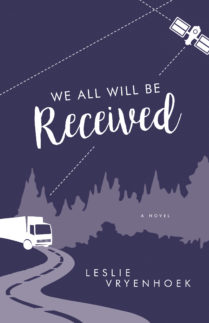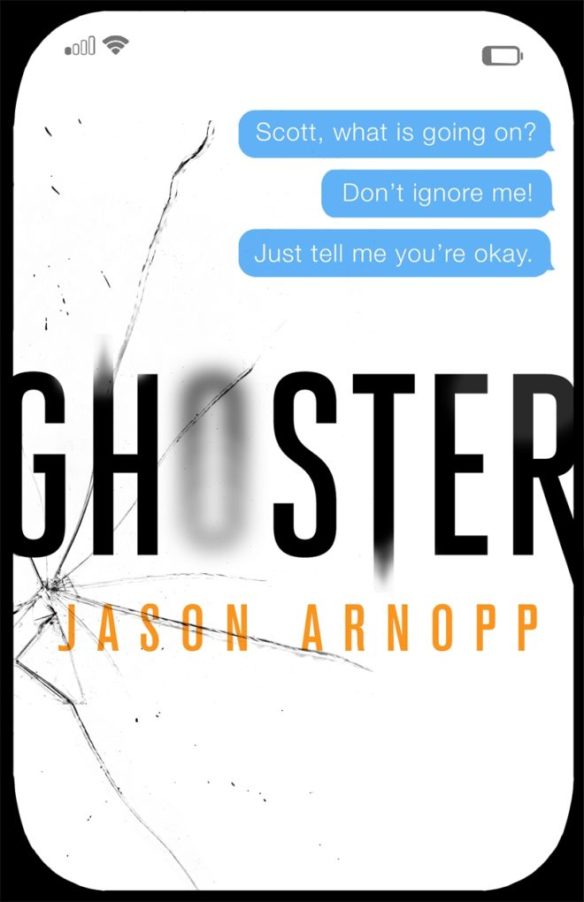The ever-changing nature of social media presents a special challenge when it comes to using it as the backdrop to a novel. This landscape never stops moving and evolving. Facebook gives way to Instagram. Email slips away in favour of texting and Whats app. What was current two years ago is old hat now.
As writers typically spend years, rather than months, penning a novel, and often longer still from first submission to seeing the work in print, how does an author capture this fast-moving target? And, once caught, how do they ensure the themes and situations remain current to readers five, ten, fifteen years or hence when modes of social media may have gone through fresh revolutions?
Three recent novels explore the effect of social media on our lives and transcend the difficulties in distinct, yet effective, ways.
The Nix by Nathan Hill is a multi-character, multi-generational saga. At its core is a broken relationship between Faye, a mother who left her home in the 1988 without warning, and her son, Samuel, who she deserted.

In 2011, Samuel, now a writer and literature professor trying to cope with his disinterested but entitled students, hides away in his office frequently playing Elfscape, an online video game. When his publisher threatens to sue him for non-delivery of a manuscript for which he has been already paid, a solution to his immediate problems springs from an amazing coincidence. In a Chicago park, a former peacenik has apparently attacked a rising right-wing political figure, Governor Sheldon Packer. Dubbed the “Packer Attacker” by the media, the woman in question is none other than Faye, Samuel’s long-lost mother.
Samuel’s amoral publisher is prepared to give Samuel a break providing he puts his name to a damning biography of the Packer Attacker, one that gives credence to ‘inside knowledge’ of Faye as everything the right wing media would have her — dangerous, irresponsible, and a serious public menace. While Samuel, bitter and resentful toward his mother, agrees to the deal, we find out in fact Faye has a complex and layered history. Desertion runs in her family, as does a folkloric Nordic force, ‘The Nix’ of the title.
In The Nix, conventional and social media converge to create an alternative reality which bears little relation to the real world but which nevertheless exerts a huge influence on people’s lives. Governor Packer, a brutal populist, becomes a ‘victim of terrorism’ even though diminutive Faye only succeeded in throwing a couple of small stones at him. Samuel, likewise, is accused of victimizing a lax student when he refuses to give her passing grades. In revenge, she bribes a would-be boyfriend, with a texted nude selfie, to hack into Samuel’s computer and find his guilty Elfscape secret which she has passed on to Samuel’s supervisor.
In one of The Nix‘s most satirical moments, another Elfscape addict has become so unused to normal human contact he gets enraged at an imaginary slight from a counter clerk and yells a catchphrase from a meaningless but omnipresent pop song, “You have got to represent!”
In The Nix, manipulation of media and political interests have permeated all levels of daily communication in a way the characters themselves don’t fully understand. Very little information can be relied upon. Crucial to the softening up of people’s brains is the immediacy and the quick fix of the information age with its gaming, texting, and selfies.
Similarly inter-generational is Leslie Vryenhoek’s We All Will Be Received.
At the heart of Vryenhoek’s novel is another escapee. It’s 1977. Traumatized by witnessing a recent knife fight, a young woman, Dawn, skips out from a seedy Ontarian motel at night, leaving her drug dealer boyfriend, Slake. She takes the cash Slake owes to his bosses. Thinking of the best way to avoid pursuit, she accepts a lift from long-distance trucker, Jerry, who’s heading east to Newfoundland.
This is a fag end of the space rock era. Jerry, though more a fan of the recently-deceased Elvis, romantically envisages a future where humanity has migrated to other planets. Jerry’s world is pregnant with exploration and optimism. He sees in the waif-like Dawn a chance to be helpful, a chance for connection.

They remain friends as Dawn gradually settles on Newfoundland’s west coast, changing her identity and depositing Slake’s drug money in the bank bit by bit so as not to arouse suspicion.
Jerry is the perfect innocent in the real sense of the term. He’s experienced enough to know that Dawn has been in serious trouble but doesn’t pry as to its nature. He takes her on drives around the landscape he loves, introduces her to family and helps her get involved in the hotel business.
Humanity, contrary to Jerry’s hope, never makes it to other planets but the universe becomes more accessible nevertheless. The internet changes everything, including the chance of remaining anonymous to those who believe they have left their pasts behind. The web can also bring together people who don’t easily mix, as it does many years later when Dawn is a successful owner of a hotel near St. Anthony, high on Newfoundland’s Great Northern Peninsula.
One of these people is Ethan. As a small child, Ethan escaped a kidnapper by crawling through a bathroom window. Now a man, he feels he has never ceased to be a fugitive, and is on the run from the relationships crowding his life.
His overbearing mother, Pauline, retains an outdated VCR player so she can show people the footage of news programs from the times of her child’s abduction. It is important, we are told, “that everyone understand what a brave pioneer she was in the field of desperate mother love.” When it’s no longer practical to keep the VCR, Pauline has the footage digitized.
Ethan’s relationship with his girlfriend has imploded in the only way relationships implode in the 21st century — online. He watches from another room as Lana changes her relationship status first to it’s complicated and then to single. Then he witnesses the online sympathy bestowed on Lana for having tried so valiantly to heal such a damaged individual.
Having broken free again, Ethan is skeptical about rehabilitation for people convicted of violent crimes. But he is about to meet a representative of an organization devoted to this very purpose at Dawn’s hotel.
One of the reasons why both The Nix and We All Will be Received work so well is that they use social media to delve intelligently into issues of social change. While modes of communication never stop altering, this sense of constant flux is almost guaranteed. Both novels also deal with misunderstanding and miscommunication. They highlight the fact that, while there is a far greater volume of daily communication than ever before, this ‘information’ in no way enhances the amount of accuracy or insight that surrounds us. Nor does it make our decisions any more sound.
A third novel, Ghoster, by Jason Arnopp delves intriguingly into communications as a backdrop to the supernatural, a subject dealt with before in this blog.
All the action of Ghoster takes place within a single year and, unlike the other two novels, it has a sole protagonist and narrator. Kate, a paramedic and social media junkie, is about to uproot her life in Leeds, England, and move to Brighton on the south coast to be with her dreamboat boyfriend, Scott.

She’s handed in her notice at work, transferred to Brighton, and is ready to go. Trouble is Scott, with whom she has been in constant contact for months, has ceased texting back. It’s only 24 hours since she heard from him but Kate is worried and can’t stop checking her phone.
Izzy, a fellow paramedic who suffered an injury while trying to guide a disorientated man down the stairs, reassures her everything will be okay. Kate feels guilty about Izzy’s accident. She should have been on the other side of the patient but she was taking a break to check her phone for messages.
Kate tries telling herself she is paranoid to think that Scott’s non-response presages disaster. And yet, she, and the reader, are too used to the immediate gratification of an answer not to worry. Her own texts become urgent and demanding.
Kate drives down south on the appointed day and arrives at Scott’s sumptuous Brighton apartment to find it empty of Scott and all his furniture. He’s simply disappeared. An apparently mocking emoji scrawled on the window overlooking the sea is the only thing which might constitute a message or an explanation.
On the balcony, beyond the glass, lies the only other relic from Scott’s habitation, his cell phone.
Next day she starts her new job in the seaside town, dealing with life and death issues as before. She takes two phones to work, hers and Scott’s. She’s decided the only way to crack the mystery of Scott’s disappearance is to hack into his accounts. When she does so, the puzzle deepens. Scott is not only alive and well; he is online, sharing photos and memes. His phone shows he has also been very active on dating sites even during their time together.
At night, squatting in Scott’s abandoned apartment, Kate experiences a ghostly blue light which eventually morphs into a monstrous distortion of one of the women who appeared as a head-shot on Scott’s phone. Kate, soon joined by Izzy, becomes more determined than ever to solve the mystery of Scott’s disappearance and the ghostly visitations.
The prose in Ghoster is frequently punctuated by text exchanges, mainly between Kate and Izzy, and the subject never strays far from social media addiction. Kate’s new paramedic partner, Tyler — Kate finds to her horror — is surreptitiously snapping photos of the accident victims they have been dispatched to save. He’s uploading them onto a voyeurism site called sickfuxx.
The non-fussy nature of the writing masks a sneakily profound story reminiscent of Ira Levin’s high concept fantasies Stepford Wives and Rosemary’s Baby. In the addiction-denying Kate, Scott, and Tyler, Arnopp satirizes an aspect of our own society just as Levin satirized the father-knows-best husband Guy Woodhouse and the ‘diabolical’ patriarchal web that oppresses the Rosemary of the 1966 Levin story.
In these novels, Hill, Vryenhoek, and Arnopp demonstrate how a canny writer can produce something timeless even from a highly topical backdrop.
Also on the subject of supernatural fiction see previous blog entries on M.J. James, Sheridan Le Fanu, Dorothy Macardle, Sarah Waters, and Shirley Jackson.
Paul Butler is the author of the upcoming Mina’s Child and The Widow’s Fire

Pingback: #Winding Up the Week #103 – Book Jotter
What a fascinating post, Paul – really enjoyed it! Will be thinking about your remarks (and frankly Ghoster sounds great)!
Thanks, Jan!
Elfscape sounds like a nice little game to get away from everything. Haha. Sounds like a couple of interesting read there. Thanks for sharing!
Pingback: Women Who Disappear: We All Will Be Received by Leslie Vryenhoek and Proof I Was Here by Becky Blake – Consumed by Ink